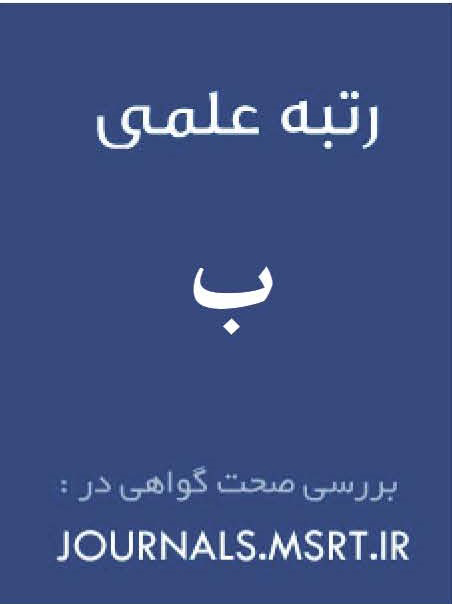A Comparative Analysis of Interest Rates and Usury in the Islamic Banking System with Emphasis on the Prohibition of Usury
Keywords:
interest rate, usury, Islamic banking, prohibition of usuryAbstract
The objective of this study is to conduct a comparative analysis of interest rates and usury (riba) in the Islamic banking system, with an emphasis on the prohibition of usury. This research has been carried out using an analytical–descriptive method. The data for the study were collected through a documentary–library approach, using books, articles, websites, and reputable scientific portals as research tools. The findings of the study indicate that interest, in essence, is a cost that an individual must pay in return for receiving and using financial facilities, whereas usury (riba) refers to an increase, superiority, or excess that is taken in return for a loaned sum, which is expressly forbidden in the Holy Qur’an. The relationship between riba and interest implies that riba applies to initial loans of a consumptive nature. However, in modern banking, borrowing tends to have a productive nature and contributes to profit generation. Consequently, the conclusion can be drawn that, since interest is the cost of using money in productive activities in modern industry and commerce, it is not forbidden. In this context, the borrower invests the loaned sum in new industries and commerce, generates profit, and therefore must pay a share of that profit as interest. Hence, what the Qur’an has prohibited is riba—not interest. Furthermore, the research findings underscore the importance of understanding the philosophy behind the prohibition of riba for the development of the Islamic financial system, encouraging jurists and Muslim economists to conduct extensive research on the matter. Ultimately, the study concludes that a zero interest rate is not consistent with the theory of the prohibition of riba in Islamic economics. The prohibition of riba in the Islamic economic system leads to the realization of optimal conditions in practice within Muslim societies, in contrast to capitalism, where achieving optimal conditions—defined as the realization of all possible returns—is theoretically unattainable. The mental and objective foundations of interest proposed by capitalist economists have aimed to legitimize and naturalize the demand for loan interest. However, the theory of the prohibition of riba is based on the notion that interest lacks any natural or real foundation.
Downloads
References
Al-Buyeh, A., & Al-Heli, S. S. (2012). Examination of bank interest under inflation with a focus on jurisprudential aspects. Rahbord Quarterly, 21(65).
Amin, H. A. (1988). Cash deposits and their applications in Islam. Amir Kabir Publishing.
Bagheri, M., & Ebrahimi, M. (2012). Comparative study of usury prohibition in Islamic and European legal systems. Journal of Civil Law Studies, 2.
Beigi, J., & Shirian Nasl, M. The foundations of usury prohibition in Qur'anic and narrative teachings with a brief view on Imam Khomeini and Motahhari's views.
Ebrahimi, M. H. (1993). Usury and lending in Islam. Islamic Propagation Office of the Seminary.
Friedman, M. (1969). the Optimum Quantity of Money and other Essays. Chicago Press, Aldine.
Ghani Nejad, M. (1997). The difference between usury and bank interest. Naqd va Nazar Quarterly, 4.
Golgoun, A., & Asadi Kouhbad, H. (2024). Examining usury prohibition as a means to fight economic poverty from a Qur'anic perspective. Modern Advances in Public Law, 3(10).
Hosseini, S. H. (2002). The wisdoms behind the prohibition of usury. Islamic Economics Quarterly, 5.
Imam Khomeini, R. Tahrir al-Wasilah (Vol. 1). Institute for Compilation and Publication of Imam Khomeini's Works.
Imam Khomeini, R. (1971). Kitab al-Bay' (Vol. 2). Matba'at al-Adab.
Javadi Amoli, A. (2009). Tafsir al-Tasnim (Qur'anic Commentary) (Vol. 12). Isra Publications.
Mahdavi Najmabadi, S. H. Theoretical methods of Islamic banking. Ravand Journal, 3.
Majidi, A., & Golriz, H. (1987). Money and Banking: From Theory to Policy. Central Bank Banking Institute.
Makarem Shirazi, N. Tafsir Nemouneh (Vol. 2). Dar al-Kutub al-Islamiyyah.
Makarem Shirazi, N. (2021). Al-Riba wa al-Bank al-Islami. Imam Ali Ibn Abi Talib Seminary.
Manzour, D., & Yadi Pour, M. (2009). Comparative study of usury prohibition in Islam and Christianity. Islamic Economics Research QuarterlyVL - 9(36).
Motahhari, M. (1992). The Issue of Usury and Insurance. Sadra Publications.
Mousavian, S. A. (2001). Jurisprudential and economic implications of the gradual or immediate prohibition of usury in the Qur'an. Islamic Economics Journal, 1.
Mousavian, S. A. (2006). Savings and Investment in the Islamic Economy.
Mousavian, S. A. (2008). Theories of usury and interest. Islamic Economics Research Quarterly, 27.
Najafi, M. H. Jawahir al-Kalam (Vol. 23). Society of Seminary Teachers.
Raghib Isfahani, H. i. M. (2006). Mufradat Alfaz al-Qur'an. Ahl al-Bayt Comprehensive Jurisprudence Software.
Shahab, M. (2014). A social pathology through economics. www.tebyan.net
Shahid Awwal. (1994). Al-Durus al-Shar'iyyah (Vol. 3). Society of Seminary Teachers.
Downloads
Published
Submitted
Revised
Accepted
Issue
Section
License
Copyright (c) 2025 جهانبخش سلطانی, هرمز اسدی کوه¬باد, ایوب عاطفی (نویسنده)

This work is licensed under a Creative Commons Attribution-NonCommercial 4.0 International License.









